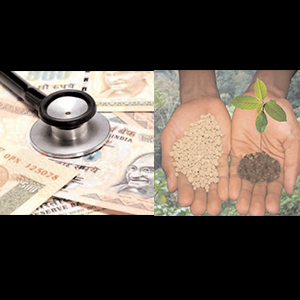NEW DELHI: A swathe of ministries — from finance to fertilizer and petroleum — are going to make a case for a reduction in subsidies before Narendra Modi, a move that will push up your monthly expenditure but is expected to help the government cut wasteful spending and revive investment. Sources said the three ministries are identifying subsidies as a key constraint in their presentations that secretaries will make before Modi, starting next week.
The interaction with the new prime minister is also expected to help the ministries get a fix on the government’s stance on subsidies given that BJP, when in opposition, had repeatedly protested against increase in prices of cooking gas and diesel, while backing the Food Security Act that offers supply of subsidized grains. The petroleum ministry is backing an immediate increase of around Rs 250 a cylinder for subsidized cooking gas, even as the monthly diesel price hike has been resumed so that the gap of Rs 4.40 paise a litre is bridged.
With the rupee appreciating against the dollar, the gap is expected to narrow to around Rs 3-3.50 a litre and the ministry is in favour of deregulating prices in one go. In addition, it has backed resumption of the direct transfer of cooking gas subsidy to bank accounts and reducing the number of subsidized cylinders given to households from the current level of 12. Although the fertilizer department is not stating a demand to reduce subsidies, it is going to make a pitch for a new urea pricing policy, which will automatically result in a reduction in doles.
The UPA government had postponed the decision for months.Sources said the twin moves also enjoy the finance ministry’s backing as North Block believes that subsidy reduction will lower the government spending, and cut the level of market borrowings, freeing resources for the private sector to revive investment. “In India, the growth story has always been driven by private sector investment and the only way to do it this time is to reduce the subsidy bill by better targeting the payments to the poor and the needy,” said a source, who did not wish to be identified.
Lower government borrowing is also expected to pave the way for Reserve Bank of India to cut interest rates, which will again help investment by the private sector. Although UPA ministers such as P Chidambaram were keen on lowering subsidies, the Congress leadership prevented them from initiating such measures. In fact, under pressure from Rahul Gandhi, Manmohan Singh had increased the annual cap on subsidized cylinders to 12 from nine earlier.
Among all the ministries, the allocation for the petroleum ministry had seen the third highest growth between 2004-05, when UPA took charge, and 2013-14, thanks to the huge spurt in subsidies. An analysis of the latest numbers shows that subsidies as a percentage of total central government spending have increased from a little over 9% in 2004- 05 to almost 14% in the interim budget estimates for 2014-15.
While fertilizer subsidy has risen four-fold to close to Rs 68,000 crore (interim budget estimate for this year), food subsidies have gone up four-and-a-half times to Rs 1.15 lakh crore. It is subsidies on cooking gas and diesel that have driven up fuel subsidy bill 18 times to almost Rs 63,500 crore. And, this does not include the liability that public sector oil companies — from ONGC to IndianOil — have borne, crippling their financial position.
Overall, the subsidy bill on the three major items has growth over five-fold, while central government spending has increased three-and-a-half times, necessitating the demand for a change in spending pattern.
